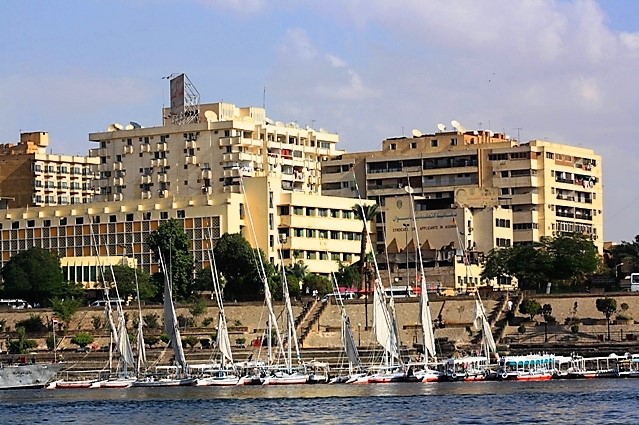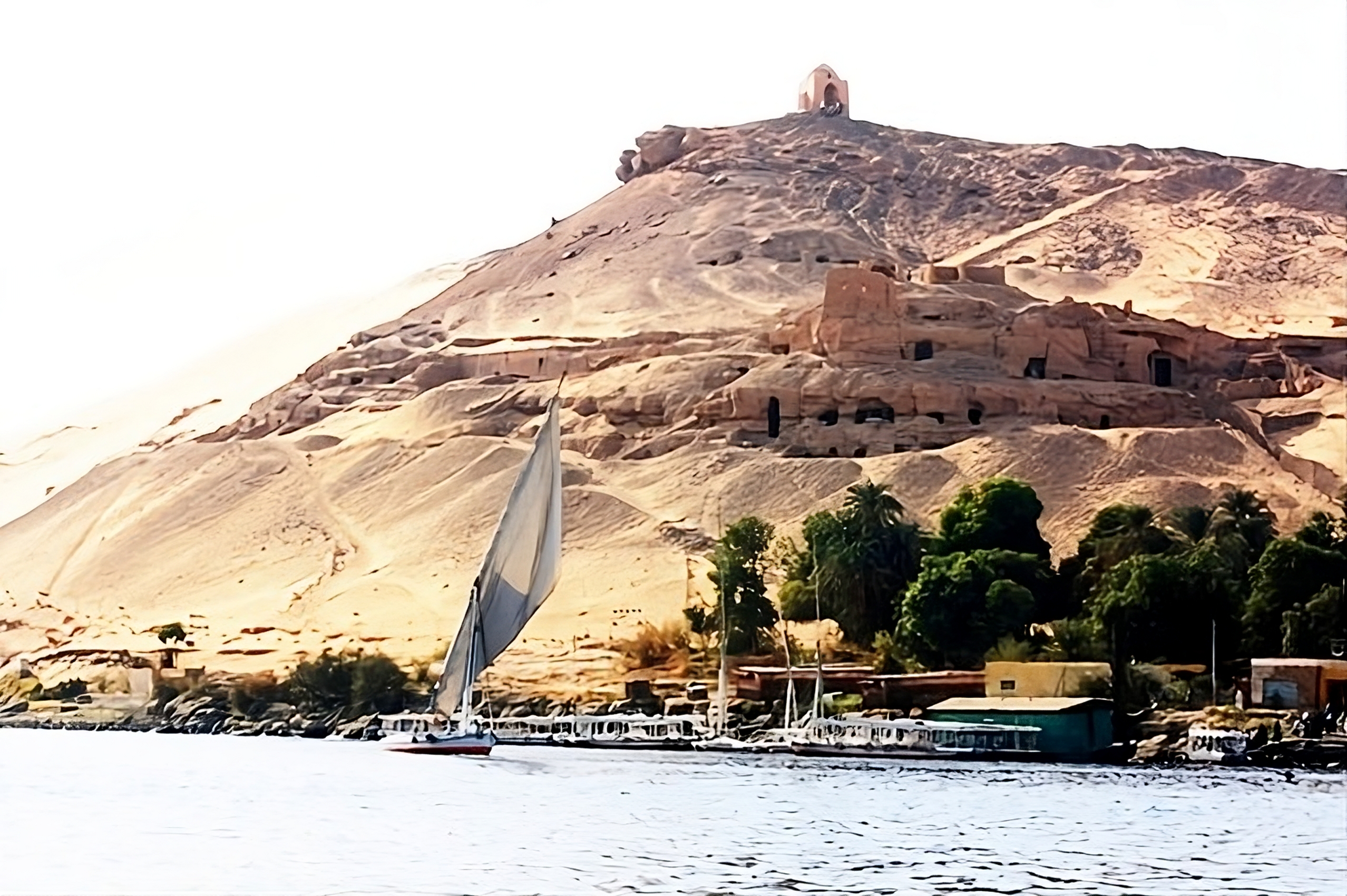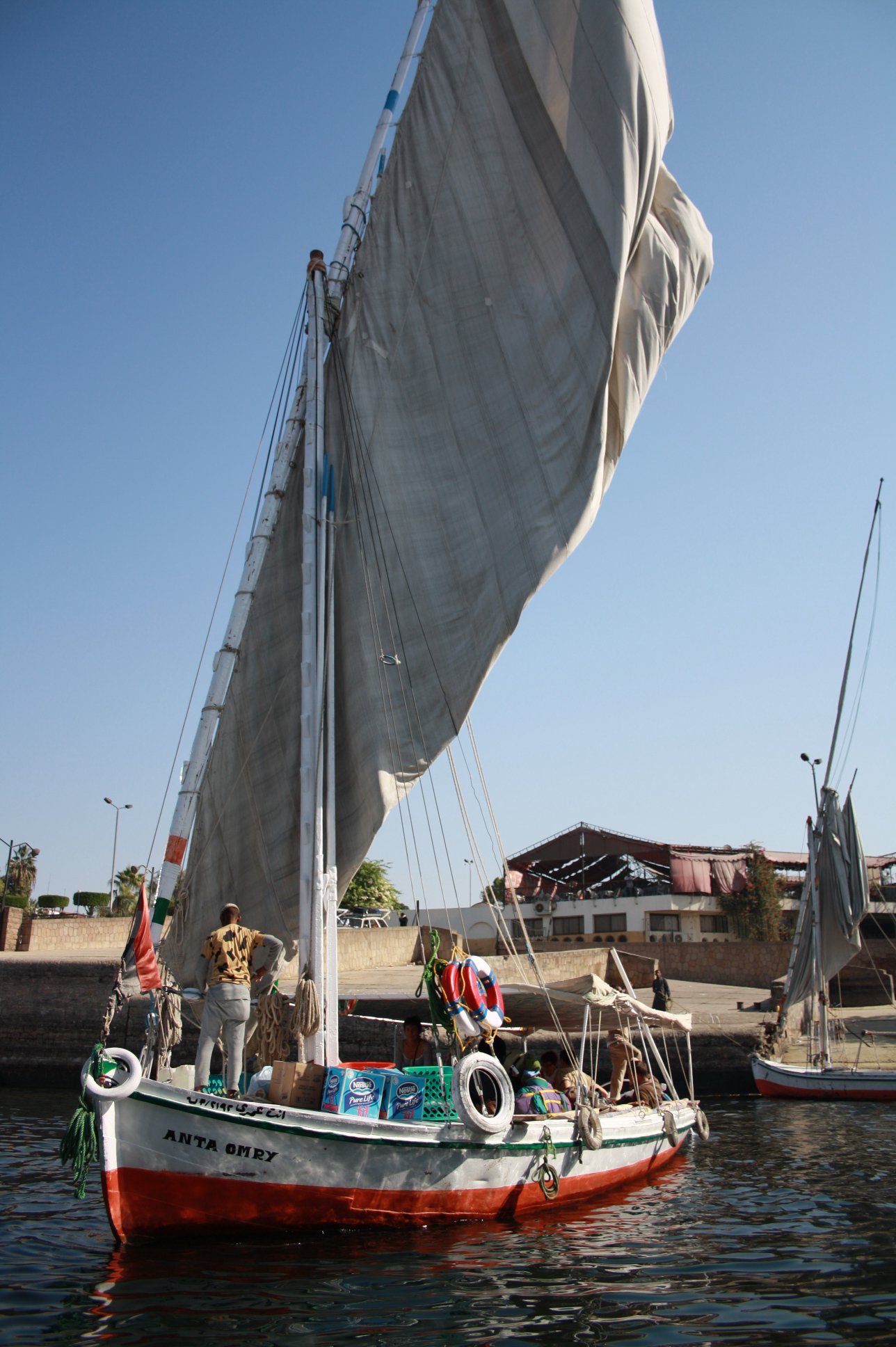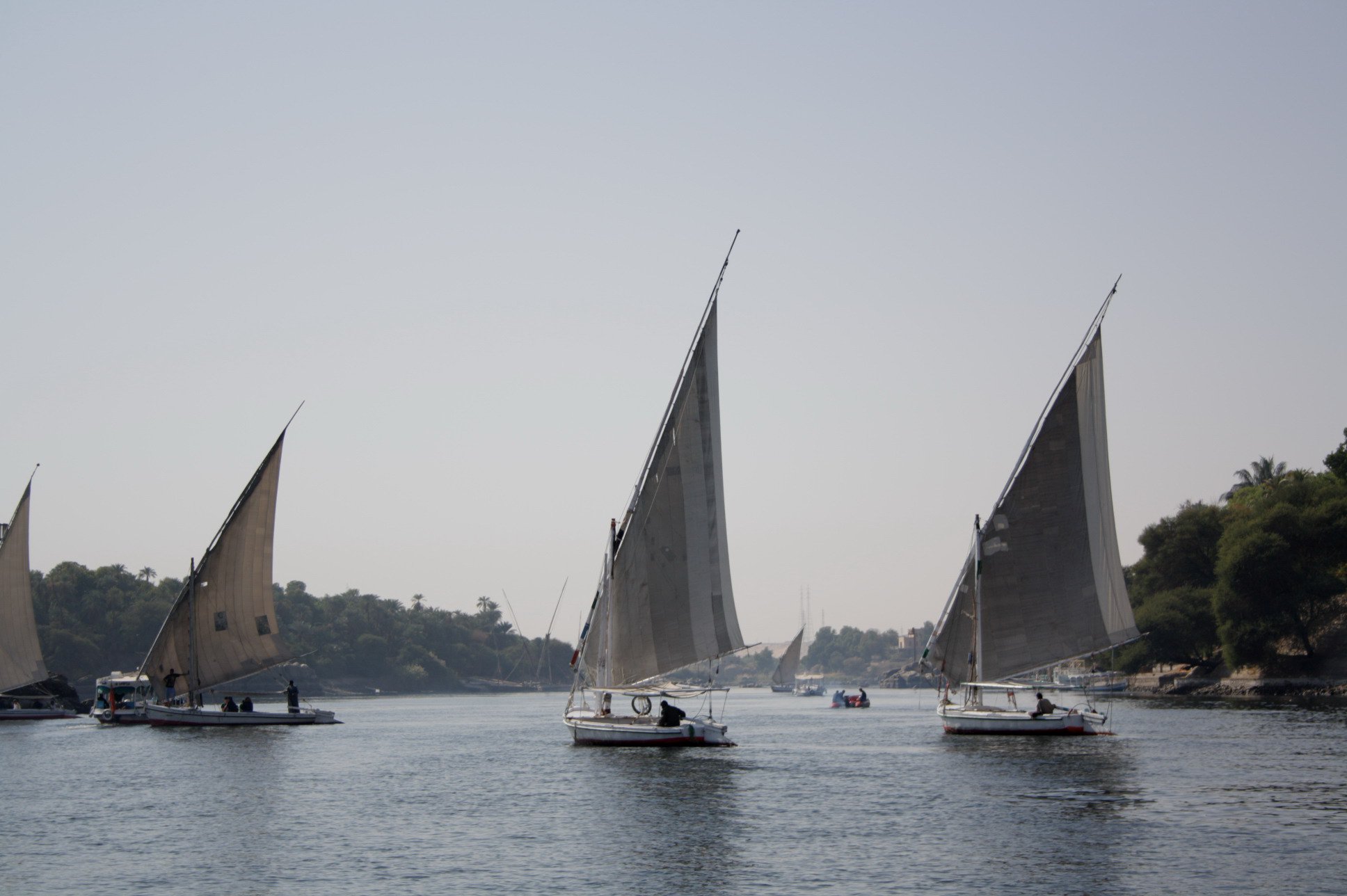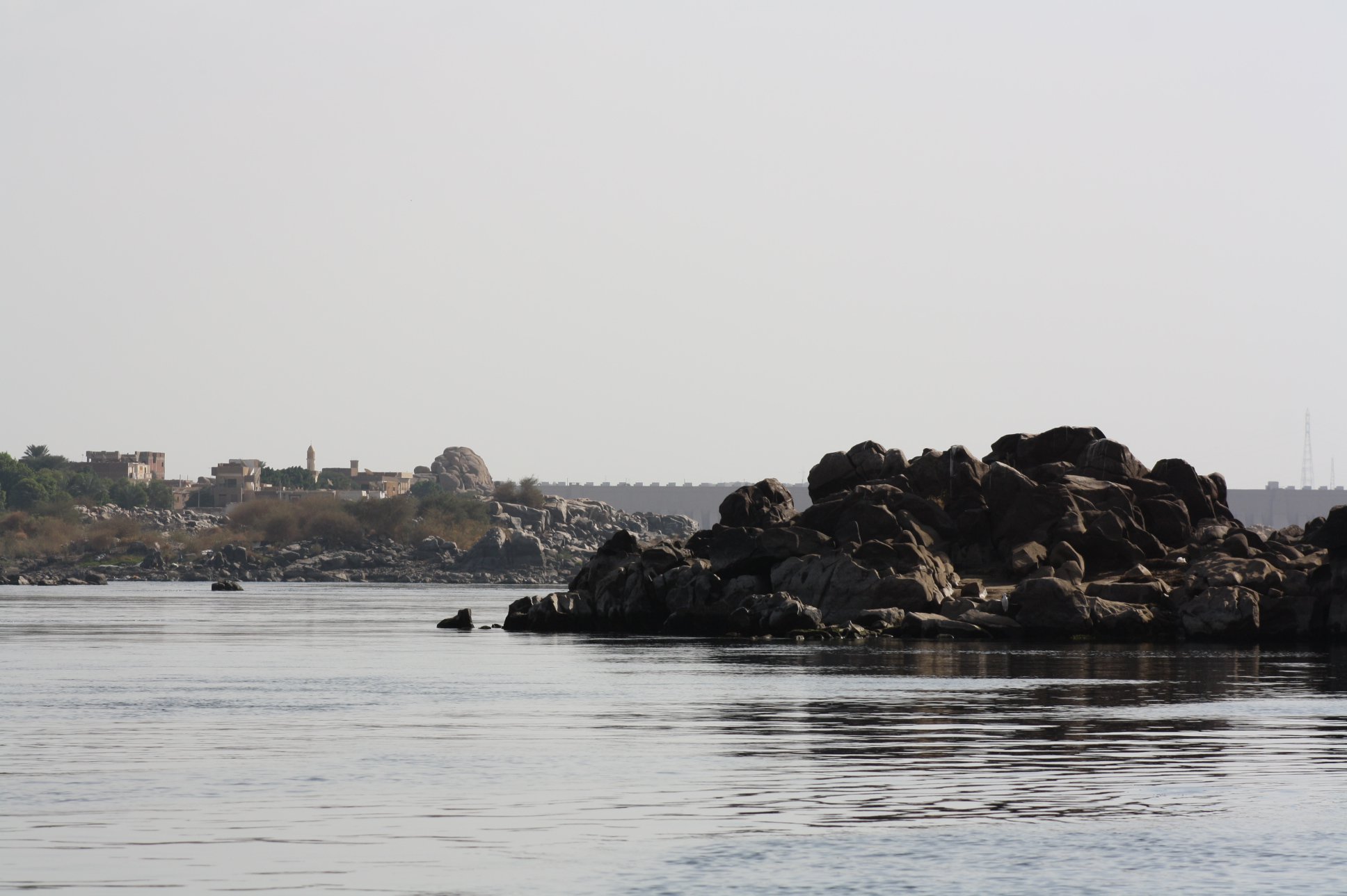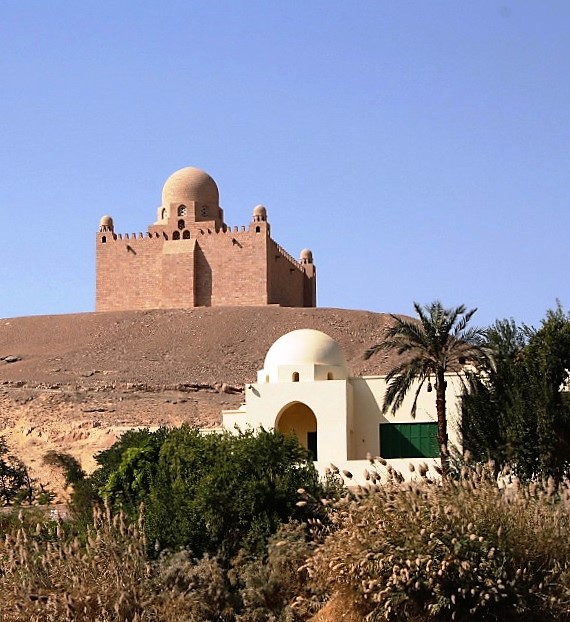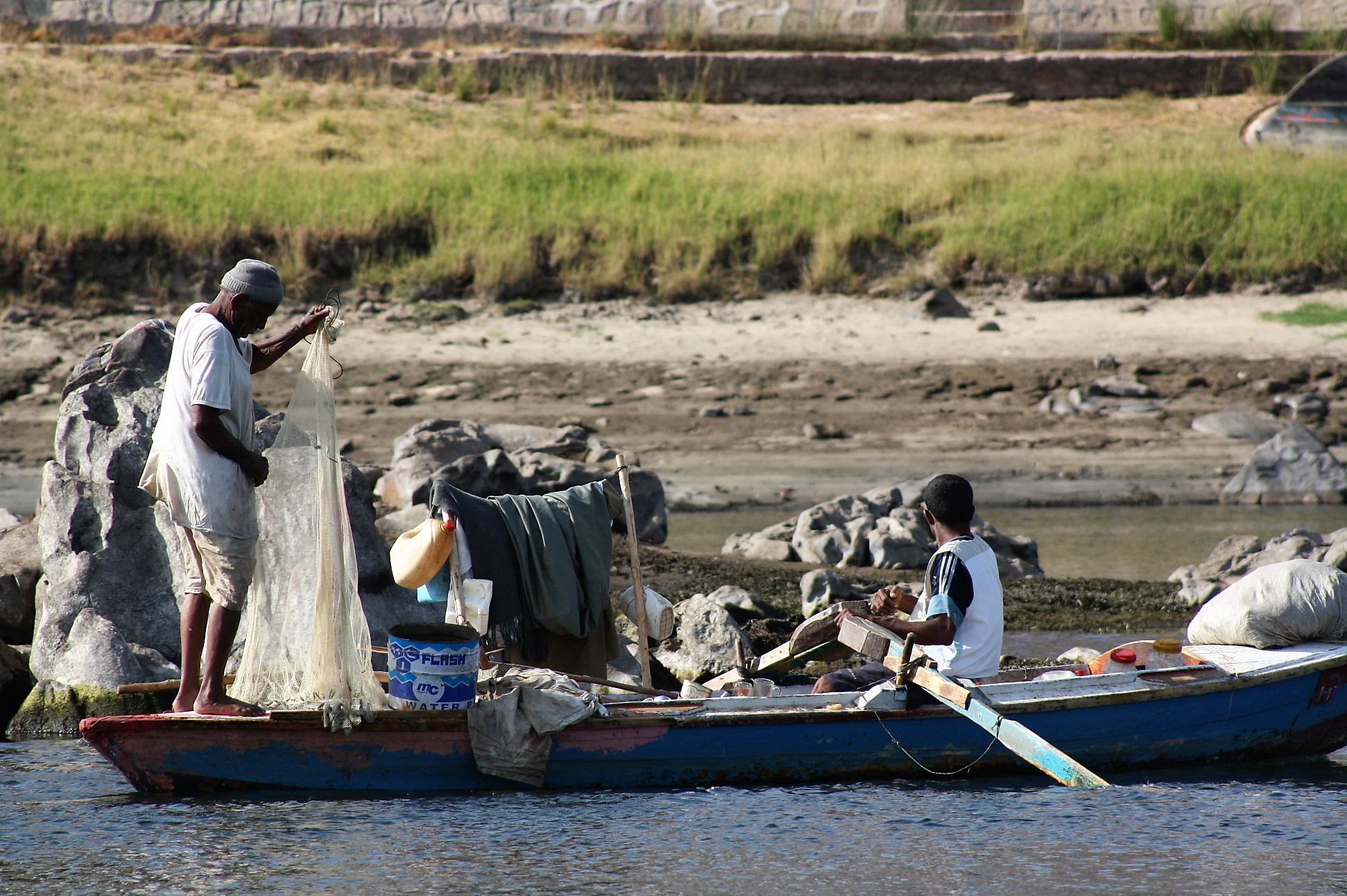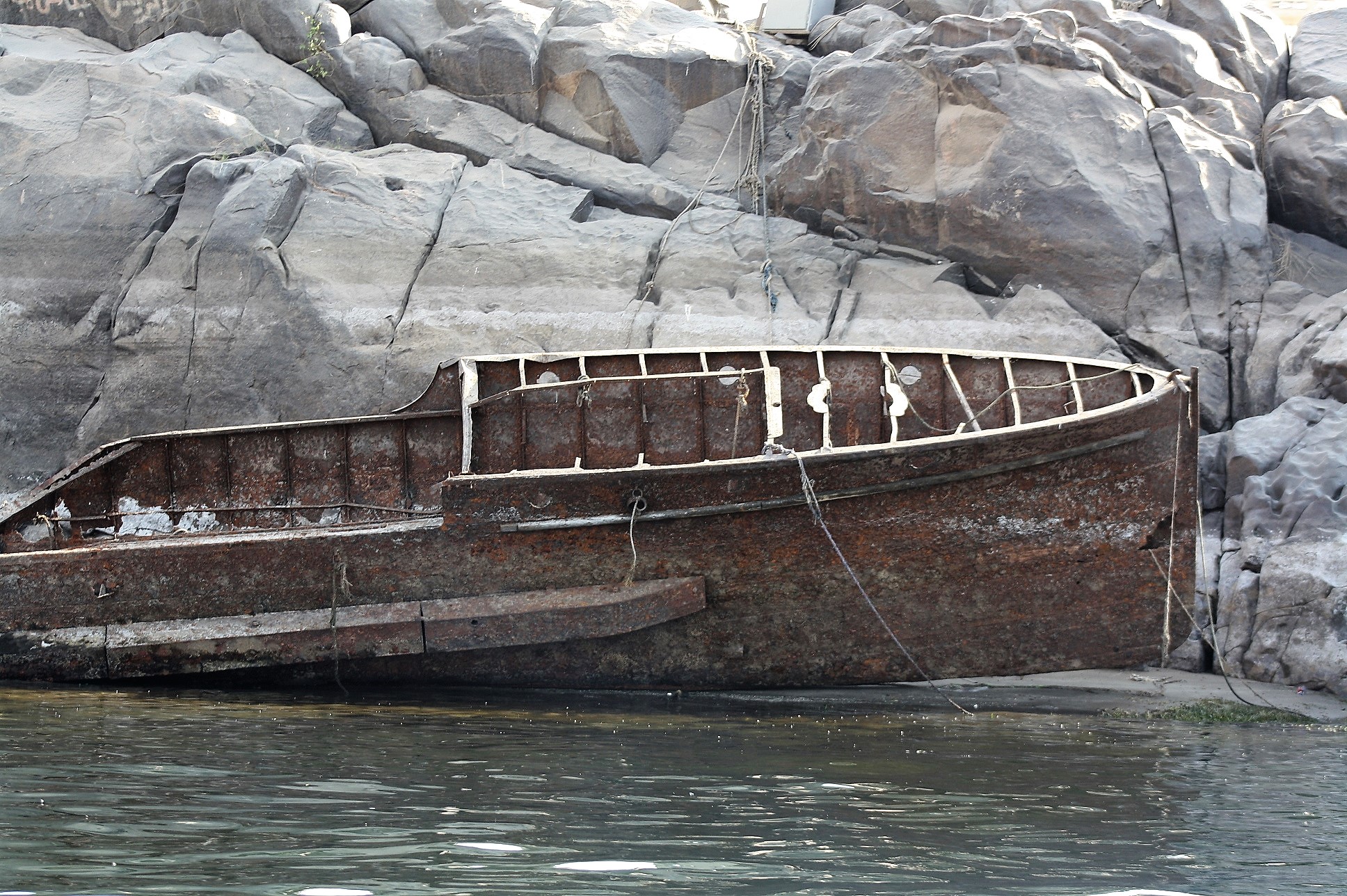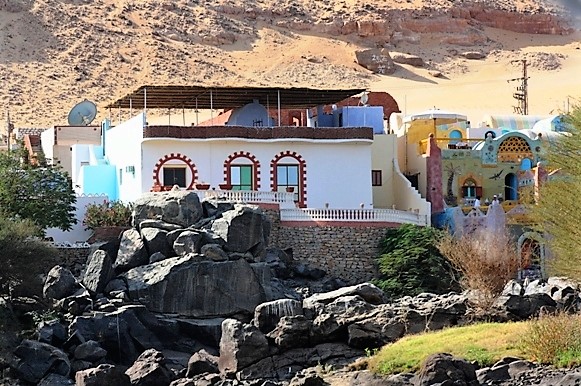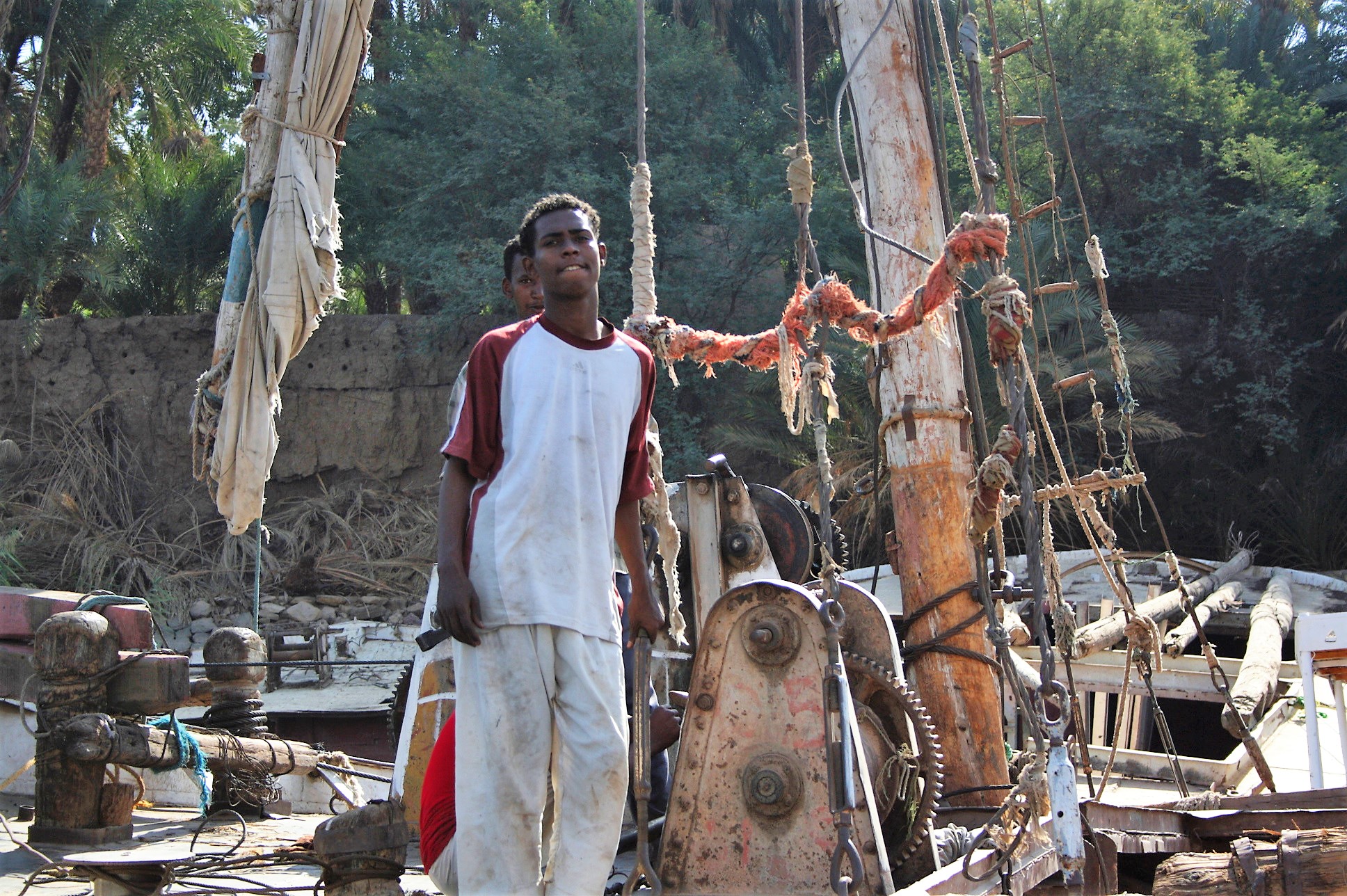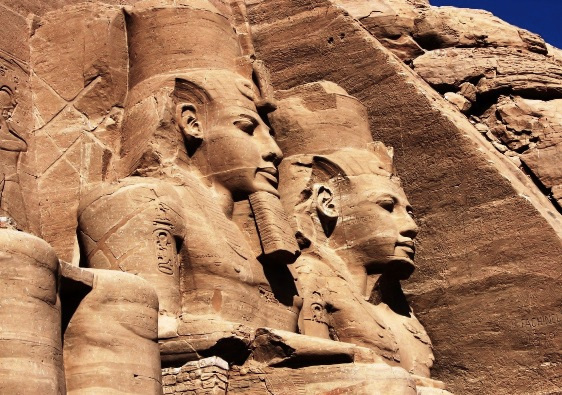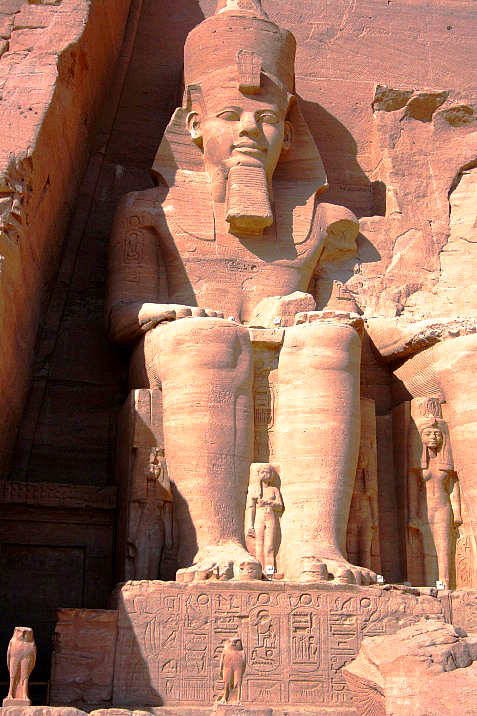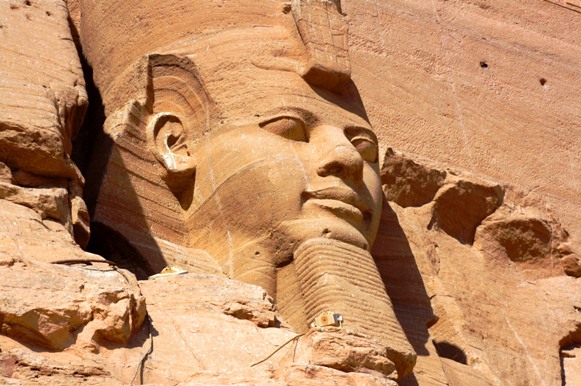Aswan & Abu Simbel
Aswan
Aswan sits just below the Aswan Low Dam and rocky shallows that give way to a broad sweep of the Nile dotted with small islands including the verdant Elephantine island and adjacent Aswan Botanical Gardens on Kitchener's Island. The city faces sunblasted desert hills on the west bank, hosting rock tombs of the Old and Middle Kingdom nobles of the city.
A pleasant enough metropolis for abrief stop to sail upstream through the islands and channels on a felluca, it was our departure point for a short plane ride to Abu Simbel further south.
Abu Simbel
Abu Simbel is 2 temples cut into the rock face - the Rameses / Remesses Temple and the Temple of Nefertari. Built in the 13th century BC, they were cut into pieces and re-assembled higher up through UNESCO sponsored intervention in 1968 to escape the rising water after the construction of the Aswan High Dam, over 300 kms away. A short plane ride from Aswan is the easy way to get there with excellent views of the huge lake formed by the dam.
Rameses was the big kahoona of the pharoahs, reigning from 1279 BC to 1213 BC. He is believed to have taken the throne in his late teens and is known to have ruled Egypt from 1279 BC for 66 years. He supposedly lived to be 99 years old and was buried in a tomb in the Valley of the Kings. The biggest tomb of course. The guy was a committed egomaniac.
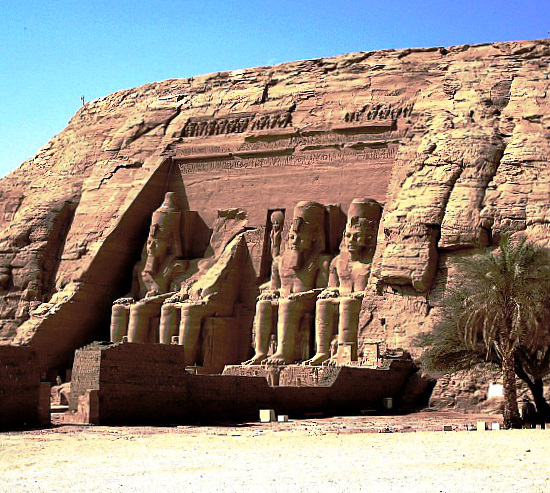
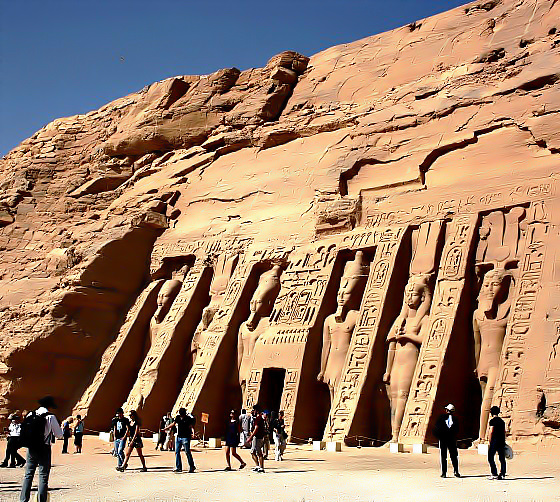
The Rameses Temple has 4 statues of Rameses II over 20 metres high fronting a complex of halls and rooms carved 60 metres into the rockface with hieroglyphics still in excellent condition with the colours of the oiginal paint still easily discernable. Unfortunatley, no photos of the inside are allowed. The complex got buried in sand around the 6th century BC and not re-discoverd until the early 1800s - probably why it's in such good nick.
Nefertari, not to be confused with Nefertiti, was one of the great royal wives of Rameses II. Her temple is about 100 metres from the Ramses Temple. Its statues, slightly more than ten meters high, are of the king and queen. On either side of the portal are two statues of the king, wearing the white crown of Upper Egypt (south colossus) and the double crown (north colossus); flanked by statues of the queen and the king, and the only time in Egyptian art where the statues of the king and his consort are equal in size.
